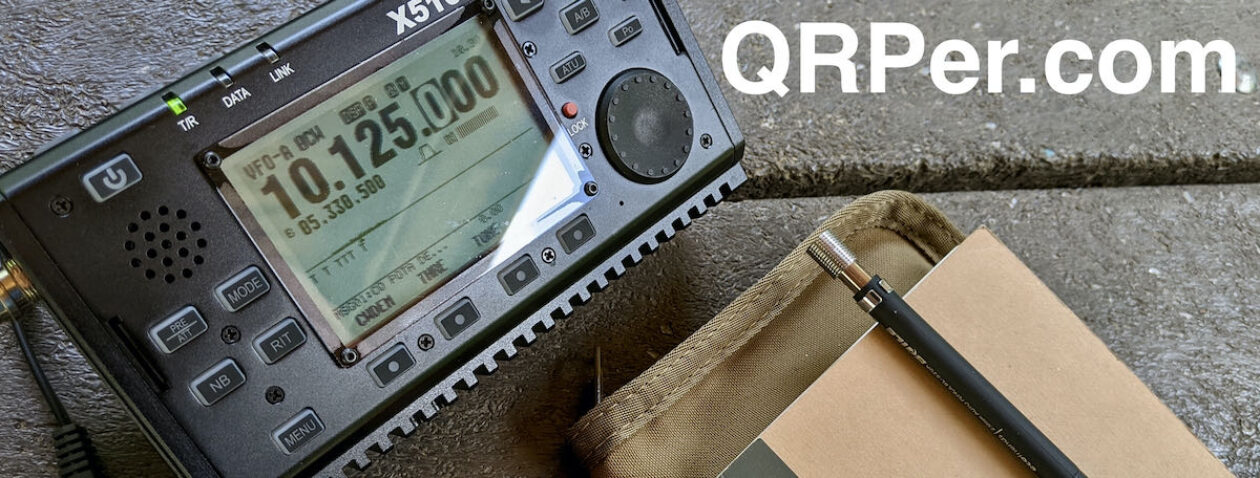by Micah (N4MJL)
I strategically suggested to my family a camping trip to Cloudland Canyon State Park in Georgia (US-2169).
It is located in northwestern Georgia, just south of Chattanooga, TN. I sold the idea to the family under the premise that it was centrally located for everyone. Cloudland Canyon State Park was about six-ish hours driving for my parents from southeast Missouri, six-ish hours driving for my sister’s family from the Florida panhandle, and seven-ish hours driving for my family in Virginia.
While that sounds reasonable enough, I actually had a deeper plan. I sold the idea to my wife that she could leave my daughter and me for two days at the state park, and she could go visit one of her college girlfriends in Huntsville, Alabama. Huntsville was less than a two-hour drive from where we would be camping. She really liked that idea because she had been talking about doing a trip down to Huntsville for a while.
That was the bait, and now for the hook. My condition was if she got to visit her friend in Huntsville, then she needed to help me get two POTA activations! As one of my old flight Instructors used to say, “plan your work and work your plan.”
 I am trying to do a POTA activation in every US state. At the time of the planing of this trip, I had not yet activated any parks in Georgia or Alabama. The second POTA activation that I wanted to complete was 40 minutes across the boarder in Alabama, Crow Creek Nature Refuge (US-9880).
I am trying to do a POTA activation in every US state. At the time of the planing of this trip, I had not yet activated any parks in Georgia or Alabama. The second POTA activation that I wanted to complete was 40 minutes across the boarder in Alabama, Crow Creek Nature Refuge (US-9880).
Our three families were able to get camping spots all next to each other on the east rim at the state park. My daughter, who is five years old, was over joyed to be camping with her two cousins who are eight and nine years old along with her grandparents! My condolences to our fellow camping neighbors, because we were definitely the loudest group camping on the East and West rim combined. Haha
Side story: one week before leaving for this camping trip I had an unscheduled long layover, due to aircraft maintenance and flight duty limitations, in Atlanta, Georgia (Delta Country). I try to avoid Atlanta, but the Company put me up in a hotel in downtown Atlanta, three blocks away from Centennial Olympic State Park (US-9798). Fortunately, my Elecraft KH-1 goes every where I go, and I was able to activate that park using the whip Antenna in the pedestrian mobile configuration on 20M band.
Day 1: Camping at the park

My Dad and I rounded up the kids to hike the short Water Falls Trail. This was a beautiful hike down into the canyon to see Cherokee and Hemlock falls. The views on the hike did not disappoint!

Much to the kids’ dismay, there are signs everywhere about no swimming or wading in the water anywhere along the falls on Daniel Creek! Reading between the lines, I think it has to do with the number of rescues that took place and the amount of pedestrian traffic that was occurring. My wife talked to the ranger, and he told us about several spots further up on Daniel Creek where it was permissible to play in the water.
Day 2
We took the ranger’s advice and drove to Sitton’s Gulch Trail Head! From here, the ranger said it was about a 1/4-mile walk to the creek where swimming was permissible along Daniel Creek. We brought a hammock, chairs, and lunch, making an afternoon of swimming in the creek. The cousins enjoyed swimming in the cold mountain streams until their lips turned blue and purple! The girls would take breaks to warm up and eat snacks, only long enough to delay the onset of early stages of hypothermia before jumping back in to do it all over again!

Day 3
Since my wife was planning to leave that evening to drive to Huntsville to visit her friend for two days, I decided that after breakfast would be a great time for my dad (AC0UT) and me to get a POTA activation at the campground! Due to all the RFI interference from the trailers in the campground, we drove over to the parking lot of the Main Overlook. In front of our picnic table, you can see the railing for the Main Overlook trail, where you can enjoy some pretty incredible views! Continue reading Family Camping/POTA in Cloudland Canyon State Park, GA




































 It uses the familiar pick and pluck foam, although in two layers.
It uses the familiar pick and pluck foam, although in two layers.
